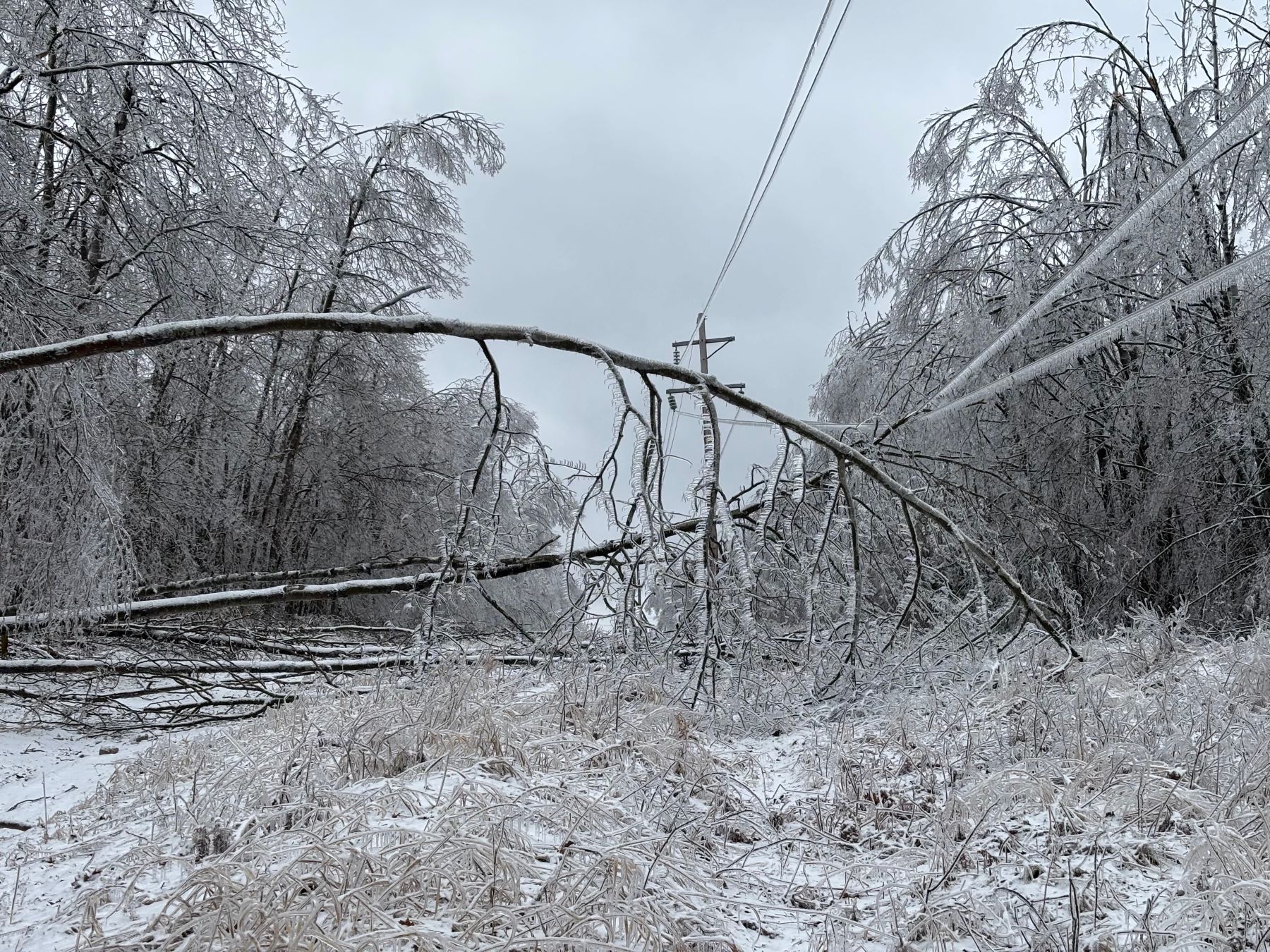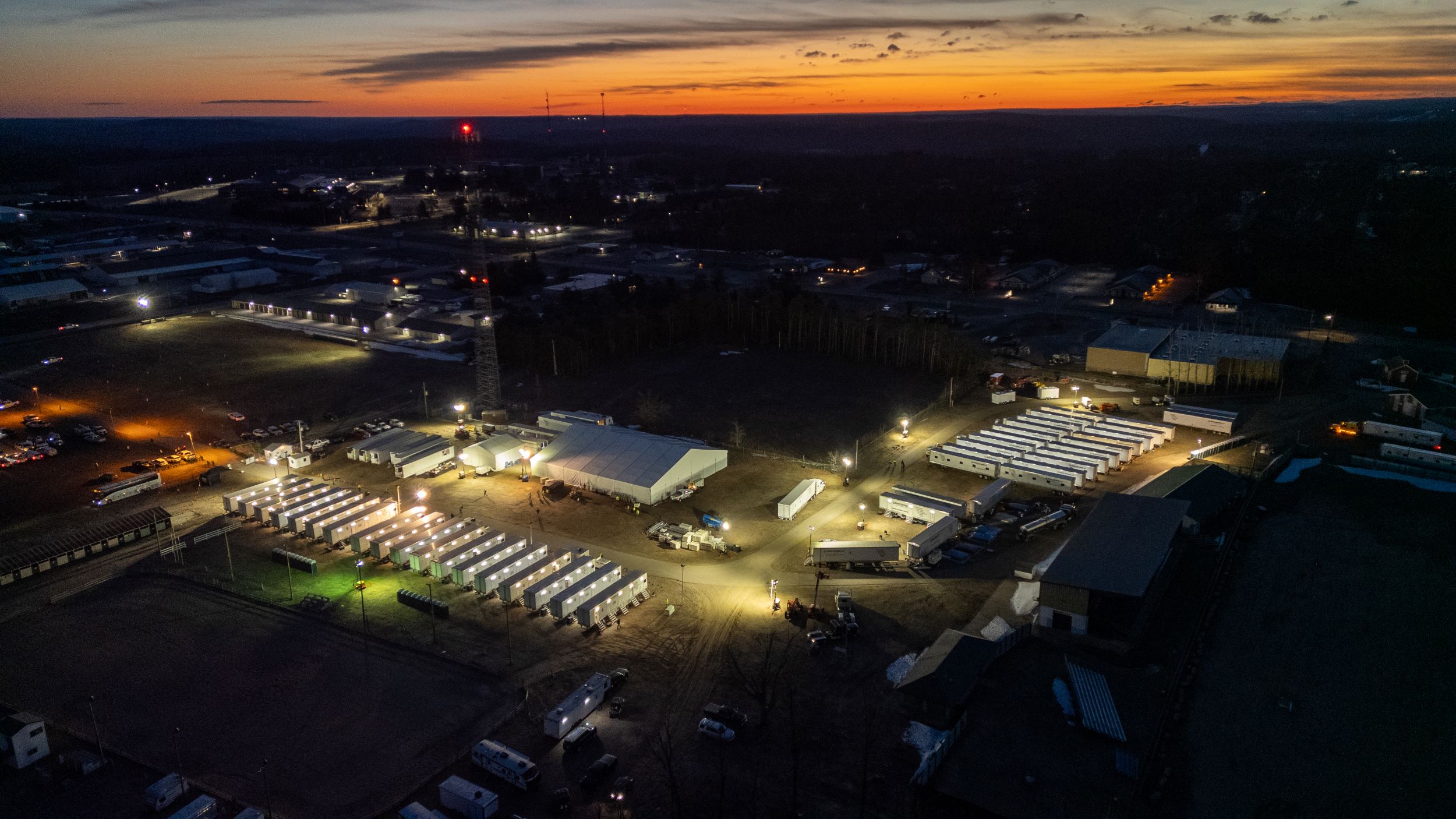Ice is part of life in Michigan, but rarely does it arrive with the fury that struck our state this spring. What began as a peaceful snowfall quickly escalated into a severe, historic ice storm that left a lasting mark on the region—and showed the true grit of Michigan’s electric cooperatives.
As thick layers of ice built up across Northern Michigan, beauty turned into chaos. Trees and branches snapped under the weight of over an inch of ice. Power lines sagged, broke, or were ripped from poles. Entire circuits failed. Nearly 100,000 co-op members across the tip of the mitten lost power—many for days, even weeks.
Widespread Damage Delays Response
The storm’s impact was widespread, complex, and difficult to reach. Restoration couldn’t begin immediately; conditions were simply too dangerous. Ice-coated debris blanketed roadways and rights-of-way, and continued snow and freezing rain kept crews sidelined for the first 48 hours. Once it was safe to move in, the damage proved staggering. Great Lakes Energy (GLE) replaced nearly a year’s worth of poles in just the first few days. At the same time, Presque Isle Electric & Gas Co-op (PIE&G) faced a complete system blackout—the first in its 88-year history.
Co-ops Rally Together
But no one faced it alone.
Electric co-ops across the state and country mobilized to help. Mutual aid poured in. Engineers, vegetation teams, communications and administrative staff, IT specialists, and others all joined the effort—not just to restore power, but to rebuild entire sections of the grid.
That mutual aid effort was a two-way street.
While Northern Michigan was buried in ice, co-ops in the south were dealing with their own crisis. On March 30, powerful thunderstorms slammed into Midwest Energy & Communications (MEC)’s service territory with 80 mph winds and two confirmed tornadoes. The storm snapped 140 poles and knocked out power to 13,000 members—the worst damage MEC had seen in decades. Crews worked around the clock in challenging weather conditions to restore service as quickly as possible.
Once their system was stabilized, MEC didn’t stop. Instead, their crews loaded up and headed north, joining the ongoing restoration effort. It’s a powerful example of what makes the cooperative model so unique—when one community gets back on its feet, it turns to lift up another.
Community and the Road Ahead
Back up north, GLE and PIE&G established a “Storm Camp” at the Otsego County Fairgrounds in Gaylord, offering meals, sleeping quarters, showers, and laundry for more than 1,000 mutual aid workers and staff. Volunteers ran the show, neighbors offered up homes and food, and local businesses donated supplies to keep the effort moving.
Recovery continues—especially along the co-ops’ fiber networks and in the removal of storm debris—but the hardest days are behind us. What remains is a powerful reminder of who we are as co-ops and as communities.
Powering Through—Together
This spring’s storms tested the resilience of Michigan’s co-ops like few events before. But they also revealed what makes the cooperative model so strong: people. From line crews to logistics teams, from volunteers to mutual aid partners, and from co-op members to entire communities—everyone played a role.
We may not be able to stop the storms. But thanks to the cooperative spirit, we’ll always weather them—together.
Follow the restoration stories at meca.coop/outage-center.


Thank God for the safety of all the volunteers.